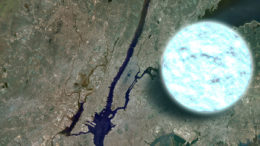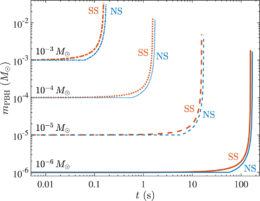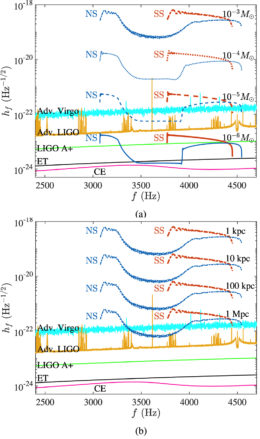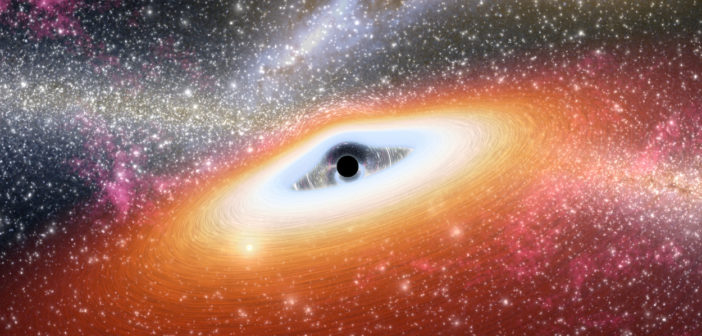It sounds like something out of science fiction: a miniature black hole barrels through the densely packed remnant of a dead star, consuming it from the inside. Strange though it may seem, this scenario might hold the key to discerning between stars composed of different kinds of exotic matter.
Strange Stars, Indeed

Comparison of the size of a neutron star to the size of Manhattan. A strange star of the same mass would be slightly smaller. [NASA/Goddard Space Flight Center]
In new article, Ze-Cheng Zou (邹泽城) and Yong-Feng Huang (黄永锋) from Nanjing University, China, propose an intriguing way to detect strange stars: by watching them be consumed by a tiny black hole. Specifically, Zou and Huang posit that we can differentiate between the gravitational waves emitted as a neutron star or strange star encounters a planet-mass primordial black hole — one that formed spontaneously from a dense spot in the universe less that one second after the Big Bang.

Demonstration of the how the mass of the black hole changes as it accretes matter from the neutron star or strange star. [Zou & Huang 2022]
Insights from Inspiraling
Zou and Huang modeled the outcome of a clash between a neutron star or strange star and a planet-mass primordial black hole and predicted the gravitational waves that would be emitted as a result. The authors consider black holes from slightly more massive than Mercury to as massive as Jupiter — with radii of 0.3 to 300 centimeters — and strange stars and neutron stars of 1.4 solar masses.
As the black hole tunnels into the star, its progress gradually slows as a result of accreting stellar material and emitting gravitational waves. Though the modeled neutron star and strange star have the same mass and similar radii (12.6 and 11.0 km, respectively), they are theorized to have different internal structures, which alters the rate at which the black hole spirals inward. This distinction is imprinted on the emitted gravitational-wave signal — but can we tell the difference?
Revealed by Gravitational Waves

Amplitude of gravitational-wave signals as a function of frequency and black hole mass (left) and distance (right). Sensitivities of existing and future detectors are shown for comparison. Click to enlarge. [Adapted from Zou & Huang 2022]
Observing these curious collisions might tell us more than just the composition of the dense stellar remnants — it also might tell us something about the composition of dark matter. If we observe primordial black holes interacting with neutron stars — or strange stars — it could help constrain the abundance of primordial black holes and determine what fraction of the total mass of dark matter they comprise. With strange stars, exciting results are clearly the norm!
Citation
“Gravitational-wave Emission from a Primordial Black Hole Inspiraling inside a Compact Star: A Novel Probe for Dense Matter Equation of State,” Ze-Cheng Zou and Yong-Feng Huang 2022 ApJL 928 L13. doi:10.3847/2041-8213/ac5ea6

